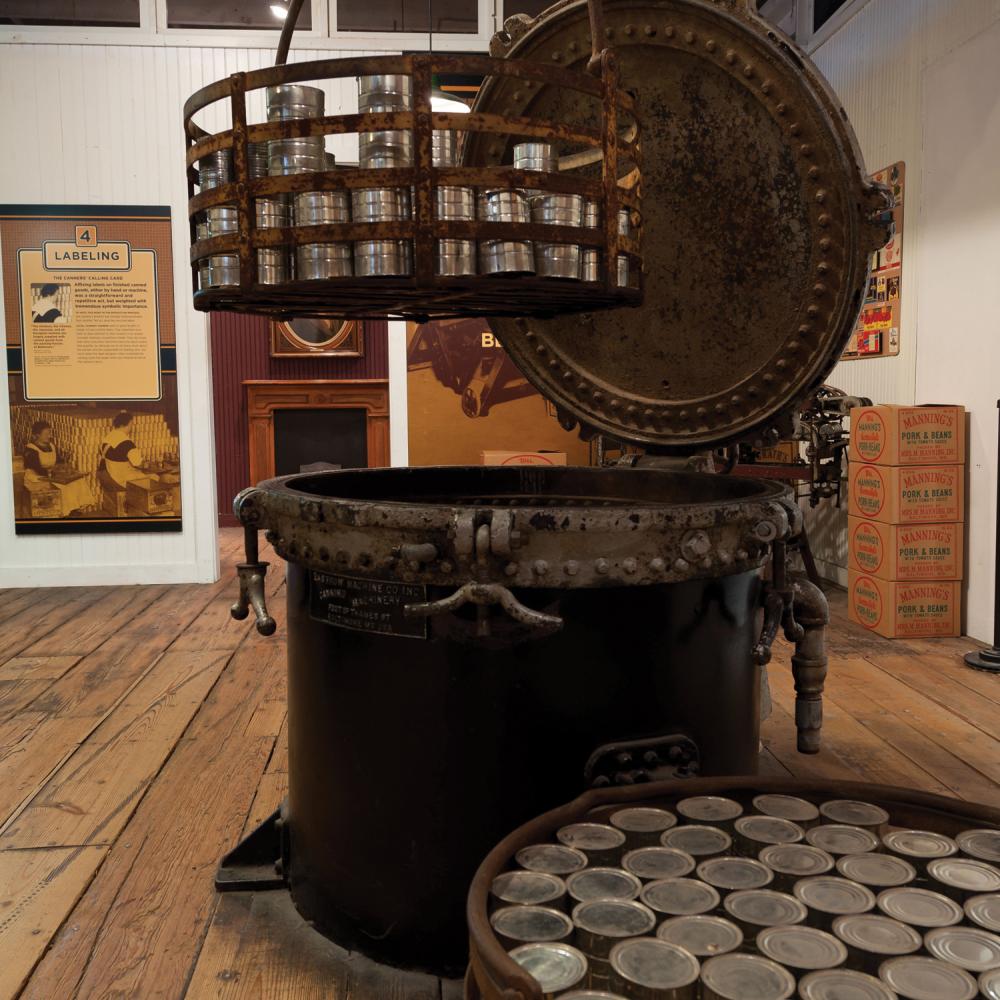In the industry’s heyday, the Platt and Company Oyster Cannery was among eighty canneries in and around Baltimore’s harbor. Oysters were canned from May until the end of August, and the rest of the year fruits and vegetables were tinned and then labeled with the aid of a letterpress on premises.
The pre-mechanization era in this industry, from around 1830 up till 1909, relied heavily on child labor. Carrying heavy baskets throughout the cannery was a task reserved primarily for boys. Automated can fillers and conveyor belts eliminated this work. Other inventions transformed the business as well, especially the steam retort. A. K. Shriver’s invention greatly increased the number of cans that could be treated against spoiling. Previously, small batches of cans were boiled in seawater for several hours, but the steam retort, which dropped down to the basement, held seven baskets with up to a hundred cans each. The boiling technique was thereby replaced by pressure cooking.
The Baltimore Museum of Industry, housed on the original site of the Platt cannery and encompassing it entirely—including the company store, where employees made purchases with brass tokens earned for shucking, filling, and labeling—has received several grants from NEH for programming in support of documenting and interpreting Charm City’s industrial and maritime history.


